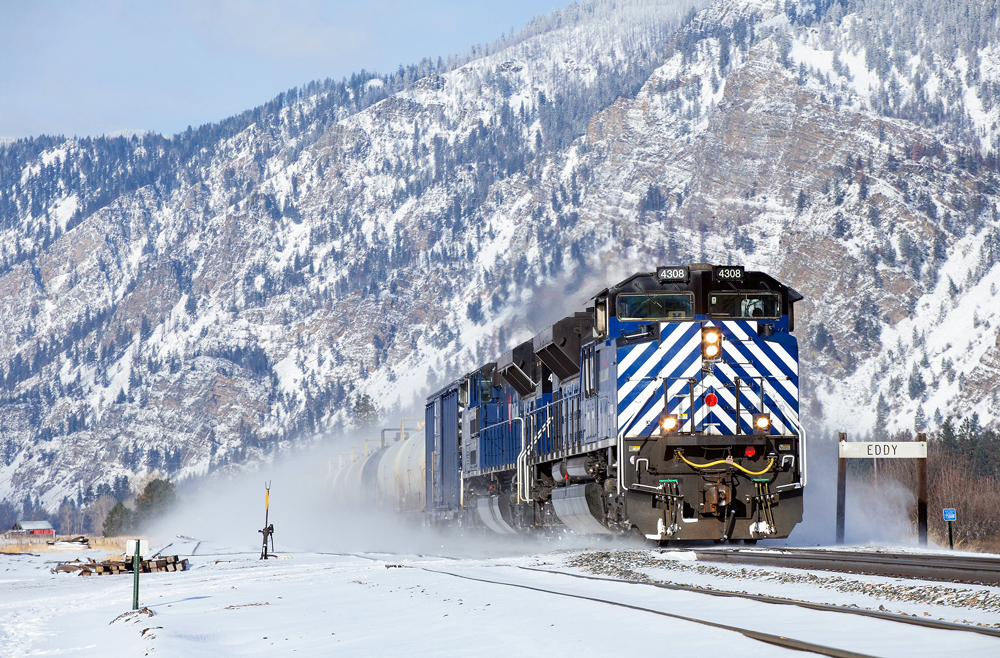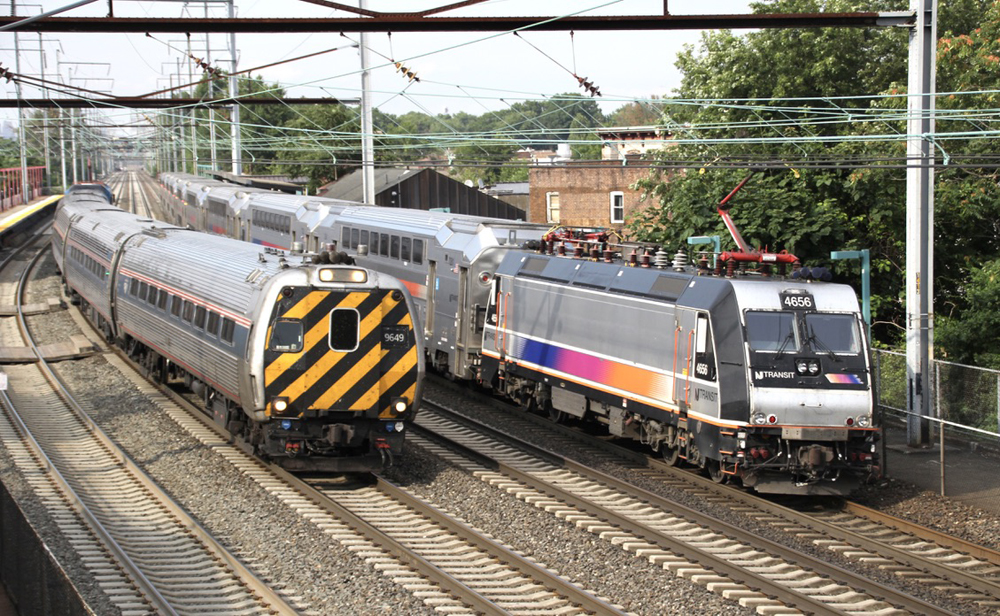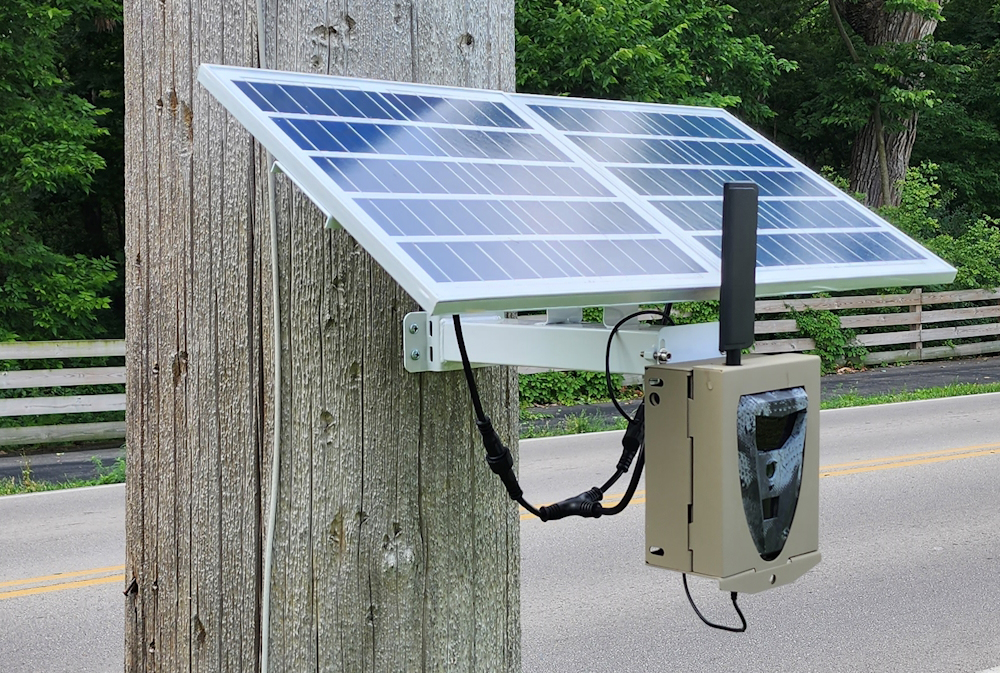
FORT WORTH – Analysts and industry observers suspected that BNSF Railway had to pay a pretty penny to buy out Montana Rail Link’s long-term lease on the former Northern Pacific main line.
It turns out they were right.
BNSF’s financial report suggests the railroad paid MRL around $2 billion to tear up the lease well before it was scheduled to expire in 2047. That’s right in line with independent analyst Anthony B. Hatch’s $2 billion estimate. Other analysts and observers who spoke with Trains News Wire arrived at the same figure, citing the valuations of recent rail acquisitions.
BNSF’s 2021 financial statement lists $2.664 billion in payments to joint facility partners and service providers, up from $568 million in 2020.
A BNSF spokesman confirms that the MRL buyout is included in the $2.6 billion figure. But the nearly $2.1 billion gap between 2020 and 2021 can’t be solely attributed to MRL, BNSF says, because it includes payments made to all partners and service providers.
It’s impossible to zero in on an exact figure: BNSF financial statements from prior years did not break out payments to joint facility partners, making it difficult to know how much the payments typically vary from year to year.
MRL announced on Jan. 10 that it was terminating its lease with BNSF and that the Class I railroad would resume operations and maintenance of the former NP main line. No timetable was given for the transfer, and terms of the deal between BNSF and MRL owner The Washington Cos. were not disclosed.
The railroads plan to negotiate labor agreements with MRL employees before seeking Surface Transportation Board approval. BNSF has pledged to retain all MRL employees.
Montana Rail Link began operations on Oct. 31, 1987 under a 60-year lease from Burlington Northern. BN had excess capacity across Montana, favored the parallel former Great Northern main line, and was saddled with antiquated labor contracts and a poisonous union-management relationship. So BN unloaded the 590-mile former Northern Pacific between Jones Junction, Mont., and Sandpoint, Idaho.
BNSF had sought to undo the lease over the years.














Considering what BN was paying in rent for the MRL haulage (based on a wag from there current report) $2 billion was a goo deal for them oner the next 5 to 10 years.
Good for MRL!
The 80’s were just a little turbulent for BN. If history serves me right, the “merger” of SLSF and BN was approved in 1980. As Ed Burns mentioned, that is when the BN officers left and the SLSF officers moved in; interesting that the officers from the smaller company usurped the officers from the larger company.
That was about the time “Pisser Bill” came on the scene and started to dismember the BN. Under Bill, the SP&S was torn up and scrapped. Stampede Pass was closed and nearly torn up. And, the NP was leased to Dennis Washington’s MRL.
The SP&S was a well engineered line that had very easy grades. Sure, it had a few problem areas. However, the GN line had constraints through the Cascade Tunnel and the NP line had Providence Hill. Losing the SP&S and Stampede may have provided short term financial gains given the state of railroading in the 80’s, it lacked serious foresight.
Fast forward to the rise of unit grain and coal trains, the NP route over Providence Hill congealed. In response, BN/BNSF spent serious coin reopening the Stampede route for empties. They continue to spend really serious coin, e.g., billions, on the line over Providence Hill. Thank goodness for BNSF that Denny stepped up to the plate to start MRL.
MRL has made significant upgrades to the NP line over time that improved fluidity and operational functionality. Again, good for MRL for reaping the benefits of their investments.
The SP&S between Spokane and Pasco did have superior operating characteristics – only .8% grade westbound and .4% eastbound versus 1.2% and 1% on the NP line. BN kept the portion between what would become Latah Jct. and Lakeside Jct. so that westward trains could avoid the 1.2% grade of the NP line (the climb to Marshall).
The SP&S line had very little online traffic, and what there was (grain) went away when the Snake River was opened to navigation as far as Lewiston, Idaho. The NP line, on the other hand, had online business and was the access to important branch lines at Marshall, Cheney and Connell. All of these branch lines continue in use today.
Had both the NP and SP&S line been keep, both would have had to have been upgraded. The standard 110-car unit grain train today (including power) is about 7,000 feet in length. The longest siding on the ex-NP between Lakeside Jct. and Pasco was 6,784 feet at Mesa with many much shorter. On the SP&S line, the longest was Lamont at 6,652 feet also with many shorter sidings. Complete directional running was not possible on the ex-NP line given all the online business. But regardless, 140 miles is a long run without a place to run one train around another – not only because sh-t happens, but because of maximum train speeds from 45 to 79 MPH. By the 1980s when the SP&S line was no longer used, 8,000+ foot trains were not uncommon. Today, they’re even longer meaning both lines would have to have sidings additionally lengthened to ensure fluidity. Hindsight is 20-20 and speculation can be fun, but there is zero evidence that today’s operation would be significantly less expensive than if the SP&S line was still in use, especially considering savings on bridge maintenance and the cost of upgrading both routes.
Providence Hill is hardly costing “serious coin” today. The hill is 7 miles of 1% grade eastward and 7 miles of .6% grade westward, all 2 MT CTC. The heaviest trains are grain and coal loads and they operate westward over the lesser .6% grade. The ex-SP&S route still in use out of Latah Jct. is steeper at .8%. The 1% grade for eastward trains is not a specific issue because most trains are powered for the even-steeper grades to the east in Montana.
The Stampede Pass route was not open “for empties.” Originally, it was used for mixed freight in both directions, but has indeed settled into an eastward-only route for lighter trains that is proven a success with the “Iron Triangle” crews in their Auburn-Pasco-Vancouver-Auburn rotation. This operating method has freed up capacity on the Scenic and Fallbridge subdivisions with a directional operation that avoids excessive crew repositioning.
As for thanking goodness for Denny Washington starting the MRL: I hardly see the relevance to BNSF, but the really is that BN would have most certainly found someone else to run the railroad if he was not available. After all, it was the ultimate “can’t lose” situation with the traffic guarantee (even during economic downturn). BN wanted to get rid of the high-cost railroad and squash the rabid anti-railroad sentiment in Montana whose roots go all the way back to ill-advised Livingston anti-merger movement in the 1960s.
Since you seem to bemoan the movement of tonnage over steeper Providence Hill versus the SP&S route, it’s odd that you’re cheering the MRL, which has skewed the way traffic has moved in the Northwest for 35 years. For unit trains, operation from Laurel to Spokane via Great Falls and Whitefish is cheaper than via the MRL despite its being nearly 100 miles further because trains avoid two helper districts. While BN and BNSF have frequently used the Great Falls route as an alternate to the MRL (when the quota satisfied), it was pointless to make all the necessary improvements to accommodate all the heavier trains via that route with a penalty looming if a quota was not met. MRL has indeed upgraded capacity on their railroad, but who wouldn’t? Not only were they guaranteed business until 2047, but they knew that the quota would limit BN/BNSF’s urge to upgrade the Great Falls route. Just after BN purchased ATSF in 1995, Rob Krebs took a shot at it: Several sidings were added between Great Falls and Laurel, staging capacity was added in the yard at Shelby, and a siding and double track added between Troy and Bonners Ferry. More was planned (in fact, the grading was done), but a downturn in business and (evidently) the inability to acquire the MRL quelled that project. Still, it came in handy. In the summer of 2009 during the MRL Mullan Tunnel collapse blocking the route west of Helena for a month, BNSF ran the lion’s share of the westbound traffic via Great Falls and was averaging 50+ trains daily between Shelby and Spokane. And while the 20+ helper units MRL needs to keep fluidity over Bozeman and Mullan Passes and Winston Hill sat idle, BNSF added no additional helper for Marias Pass, maintaining its status quo two 2-unit sets.
I’m glad that the MRL is “returning to the fold” not because it’s such a plum, but because maybe for the first time since Burlington Northern came into being we will see “unskewed” railroading across Montana. It won’t happen overnight; After all, 35 years of an artificially-created entity will take a while to unravel.
My other beef is that if BNSF has $2 billion to spend, then they should quit bellyaching about CPKC and Laredo and invest in their own route into Mexico. I am tired of hearing how these Class 1’s are so poor and then suddenly spring the wallet open to buy out someone’s cubic zirconia. It’s like a bunch of grandpa’s who pinch their pennies for years and then suddenly see a 57 BelAir they went on a date in and will break the bank to get it.
Well if you’re insinuating that BNSF has been claiming poverty and not investing in its infrastructure prior to the MRL acquisition, you’ve just not been paying attention – most notably last decade and the tens of billions to enhance infrastructure to accommodate the spike in traffic during the Bakken Oil Boom and the recurring investment in the Southern Transcontinental route and elsewhere. But all these billions wouldn’t be even a fraction of enough for BNSF to create its own route to Mexico via South Texas (BNSF – via UP trackage rights – already interchanges with Ferromex at Eagle Pass; the issue is accessing KCSM at Laredo which they currently only do via KCS at Robstown, TX). But I suspect that the “bellyaching” is simply calling the CP-KCS’s bluff: On the one hand, they think they will get enough new business to run 11 more trains per day through Houston, but they’re not saying how that’s going to happen without spending an appropriate amount of money (and it’s not their railroad) OR it could be that they really know that those 11 trains aren’t going to materialize due to their crappy route structure so they don’t think upgrades really need to happen. If the KCS was really that great of a prize (and 11 trains is a lot), then NS or CN (both with more money than CP has) would have acquired KCS long ago. So now BNSF and others are simply asking CP-KCS to show their cards. Are they holding a royal flush, or are they just full of something that needs to be flushed?
When BNSF reopened Stampede pass in ’95-’96, they had intentions to enlarge the Stampede tunnel to accommodate tri-level and double stack consists. I don’t recall how much money it was expected to cost, but BNSF got nervous about the cost and postponed the update. The was a decision that has burned them ever since. Now, I know that regardless of that expected cost, it was a whole lot less then 2 billion….I’m mentioning this because it seems to me that someone inside the BNSF ranch is making some pretty stupid decisions….in my humble opinion.
A good and costly remedy to a stupid mistake. When the architects of the 1970 merger retired, non railroad took over and made very bad decisions, namely MRL. One man privy the the debacle said that the BN was sorry for the agreement before the ink was dry on the agreement. Both side were very confrontational and would not back down.
Ed Burns
Retired NP BN BNSF clerk from Northtown Minneapoilis.